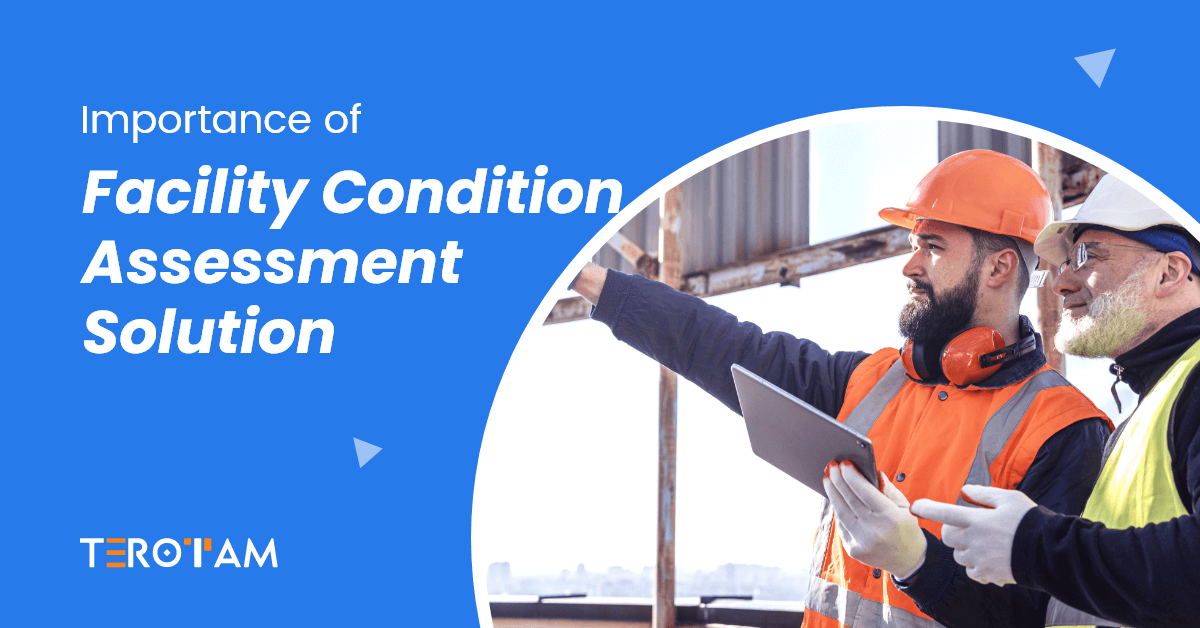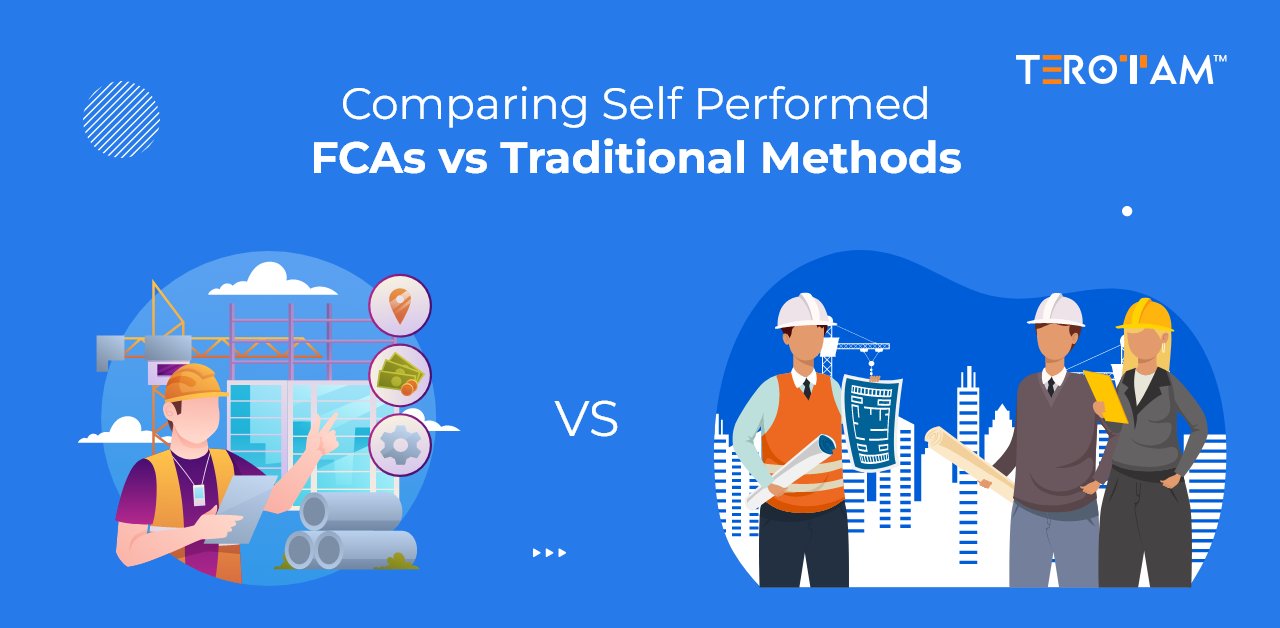If you are curious enough to streamline your business, you must have a question in mind at some point of time: how do successful businesses maintain their offices, warehouses, or facilities in good working order over the years? Keeping track of what needs fixing and when can be a puzzle as things get older. So, how do they make sure everything stays in tip-top shape?
That’s where Facility Condition Assessment steps in. But performing it can not be a piece of cake. You need a well-defined system and a systematic solution to implement it that brings you the desired result.
In this article, we will take a quick look at the concept of Facility Condition Assessment solution and its crucial role in keeping your business facility up-to-date.
Let’s get started with understanding the concept of Facility Condition Assessment.
What is Facility Condition Assessment?
Facility Condition Assessment (FCA) is a systematic evaluation process used to gauge the current state of a facility’s physical assets, including buildings, equipment, and infrastructure. It involves comprehensive inspections, data collection, and analysis to assess these assets’ condition, performance, and maintenance needs. FCA helps identify deficiencies, prioritize maintenance and repair activities, and develop long-term asset management strategies.
Why is Facility Condition Assessment Needed?
Facility Condition Assessment serves as the cornerstone of effective facility management strategies. Regular assessments of building assets allow organizations to gain valuable insights into the health and performance of their facilities. This proactive approach enables businesses to address issues before they escalate, minimize risks, and optimize operational efficiency. With Facility Condition Assessment, organizations can make informed decisions, allocate resources effectively, and ensure the long-term sustainability of their facilities.
Optimized Asset Performance:
FCA ensures optimal performance of assets by identifying maintenance needs and addressing them promptly, thus maximizing uptime and productivity.
Extended Asset Lifespan:
Regular assessments help prolong the lifespan of assets through proactive maintenance, reducing the frequency of premature replacements and associated costs.
Data-Driven Decision Making:
FCA provides data-driven insights that empower decision-makers to allocate resources effectively, prioritize maintenance tasks, and plan for future investments.
Improved Safety and Compliance:
By identifying safety hazards and ensuring compliance with regulations, FCA helps create safer work environments and mitigates the risk of accidents or regulatory penalties.
Enhanced Tenant and Customer Satisfaction:
Well-maintained facilities lead to higher satisfaction among tenants, customers, and stakeholders, contributing to positive relationships and business success.
Streamlined Operations:
FCA streamlines maintenance operations by identifying inefficiencies, optimizing workflows, and reducing unplanned downtime, resulting in cost savings and improved operational efficiency.
Asset Documentation and Transparency:
Regular assessments create a comprehensive asset information database, fostering transparency and accountability in facility management practices.
What Does Facility Condition Assessment Include?
A comprehensive Facility Condition Assessment typically includes the following components:
- Visual Inspection: Conducting thorough visual inspections of buildings, equipment, and infrastructure to identify visible signs of wear, damage, or deterioration.
- Functional Testing: Testing the functionality of systems and components such as HVAC, electrical, plumbing, and fire safety to ensure they are operating as intended.
- Documentation Review: Reviewing maintenance records, repair histories, warranties, and other documentation to understand the maintenance history and performance of assets.
- Condition Rating: Assigning condition ratings to assets based on standardized criteria, such as the Building Owners and Managers Association (BOMA) standards or the Facility Condition Index (FCI), to quantify their condition.
- Asset Inventory: Creating an inventory of all assets within a facility, including equipment, machinery, furniture, and fixtures, to track their location, condition, and lifecycle status.
- Risk Assessment: Identifying potential risks and vulnerabilities associated with asset conditions, safety hazards, and regulatory compliance issues to prioritize mitigation efforts and allocate resources effectively.
- Technology Integration: Leveraging technology such as Facility Management Software or Computerized Maintenance Management Systems to streamline data collection, analysis, and reporting processes, enhancing the efficiency and accuracy of assessments.
- Stakeholder Engagement: Engaging stakeholders such as facility managers, maintenance staff, building occupants, and external contractors in the assessment process to gather insights, address concerns, and foster collaboration in maintaining facility assets.
Why Organizations Must Have a Dedicated Facility Condition Assessment Software Solution?
Investing in a dedicated Facility Condition Assessment software solution offers numerous benefits:
Centralized Data Management: FCA software streamlines data collection, storage, and analysis, providing a centralized platform for managing asset information.
Efficient Workflows: Automated workflows and customizable templates streamline the assessment process, saving time and improving productivity.
Data Visualization: Interactive dashboards and reports enable stakeholders to visualize assessment results, trends, and performance metrics.
Predictive Analytics: Advanced analytics capabilities help forecast asset deterioration, prioritize maintenance activities, and optimize resource allocation.
Integration Capabilities: Integration with other facility management systems facilitates seamless data exchange and collaboration across departments.
Scalability and Flexibility: FCA software solutions can scale to accommodate the needs of organizations of all sizes and industries, adapting to evolving requirements and regulatory changes.
Conclusion
Facility Condition Assessment is a critical tool for proactive facility management, ensuring physical assets’ longevity, safety, and efficiency. By adopting dedicated software solutions, organizations can streamline the assessment process, optimize resource allocation, and make data-driven decisions to maintain and optimize their facilities effectively.
Want to get more insight on a Facility Condition Assessment solution for your business? – Let’s connect now or write us at contact@terotam.com








